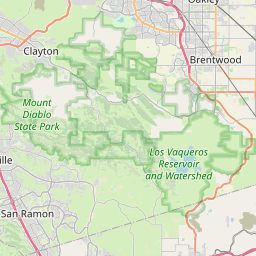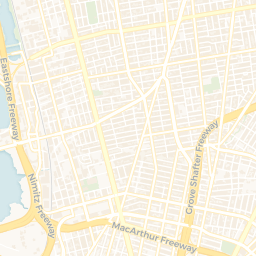Amidst growing opioid crisis, campus groups take action
July 02, 2024

Long Hei Ma | Staff
The opioid crisis has had its impact in the Bay Area since the pandemic, and illegal use of these drugs has caused reason for enhanced harm reduction strategies, specifically in UC Berkeley’s campus safety programs.
Opioids are prescribed as medication for severe pain, usually from intense surgery. Illegal use of opioids has been a continuous problem since the 1960s. According to the CDC, three significant waves of overdose have been attributed to an increase in overall prescriptions in the 1990s, a spike in heroin use in 2010 and the introduction of synthetic opioids in 2013.
One of the most common ways that fentanyl overdoses happen is when other substances are mixed with or laced by it. Even ingesting a small amount of fentanyl is deadly. The mixture of fentanyl and other recreational drugs, such as alcohol, results in many overdoses going unreported, as many victims are unsuspecting users.
Since the pandemic, fentanyl-related overdose rates in Alameda County have skyrocketed, despite rates historically staying lower than the rest of California. Based on preliminary data for 2023, the county’s overdose rate is rising faster than that of the state as a whole.
Post-pandemic, fentanyl death rates in Alameda County are rising faster than the California average
- California
- Alameda
Data are taken from the California Department of Public Health Opioid Dashboard. Rates are calculated per 100,000 residents.
The recent spike in overdoses related to the pandemic alludes to a new set of current issues. A 2021 study by Anna Kline et al. attributed this recent increase to the loss and lack of medical insurance and other financial burdens.
Unequal access to health insurance — especially among marginalized groups — pushes those that are disadvantaged to seek alternative medication forms, such as opioids. This can be understood through the overdose increase during the pandemic when the medical care equity gap furthered and opioids were increasingly used as under-the-table, ulterior forms of medication.
Fentanyl death rates in Alameda County by zip code









Map shows fentanyl death rates per 100,000 residents in 2022 for each zip code in Alameda County, adjusted for age.
In data from 2022, 0.3% of UC Berkeley students reported having used opioids in the past three months, compared to 0.7% of students nationwide. That amounts to about 100 students on campus.
A 2011 study on Facebook by Sarah Lord et al. was conducted in order to determine attitudes and beliefs that connect the increasing rate of prescription drug misuse among college-aged students. Recreation and self-medication, primarily against anxiety and depression, were the two most prevalent motivations for opioid use among young adults. The increasingly significant presence of drugs among college-aged students elicits immediate action toward prevention.
Because of the severity of opioids and the harm to their users, harm reduction strategies are important to implement before the consequences are present. Fentanyl test strips are critical to preventing, rather than reversing, overdoses. The strips are designed to test the presence of fentanyl in any kind of drug. With a standard kit, users just mix the suspected drug with water and dip the strip in for 15 seconds. A positive fentanyl result is indicated with a singular pink line and negative with double.
When someone overdoses from opioids, there are strategies in place that can be life-saving in these situations. Narcan (the brand name for naloxone) is the most well-known approach to overdose reversal, acting as a block to the effects of the opioid on the body.
There are several sites on campus that provide free fentanyl test strips, and several clubs distribute them as well. FentCheck, a nonprofit organization operating on the West and East coasts, distributes free test strips to bars, clubs and schools across the East Bay. Similarly, End Overdose is a nationwide club with a chapter on UC Berkeley campus that focuses on preventing and ending overdoses.
FentCheck and campus fentanyl test strip availability
Data may be non exhaustive.
Community organizations in the East Bay such as NEED and the Berkeley Free Clinic offer harm prevention resources. From 2021–23, both organizations collectively distributed around 4,000 overdose prevention kits, according to Berkeley’s Biennial Syringe Services Report. These resources helped reverse 415 overdoses, according to reports of who had used the naloxone distributed.
Campus is working toward preventing the harms of opioids on campus. The Harm Reduction Expansion Project, or HREP, is a student-led campus program specializing in fentanyl harm reduction on campus. The program was founded in 2021 by four UC Berkeley Students, and works in close collaboration with PartySafe@Cal, campus’ main drug and alcohol abuse prevention program.
In 2023, the program received an $18,215 grant from the Berkeley Wellness Fund, which is funded through student fees. As of Spring 2023, the group has distributed 4,700 fentanyl test strips, 402 Narcan kits and trained over 500 students in overdose prevention. HREP students staff a table on Sproul Plaza every week, offering peer-to-peer training and educational resources.
Despite the campus’ efforts, getting students informed remains an issue.
“Awareness and visibility is one of our greatest challenges being on a large campus,” said Program Coordinator for Collegiate Recovery Becca Gardner. “We’re always seeking to partner with student groups and advocates.”
Claire Roach is a projects developer. Contact her at croach@dailycal.org
Mark Verzhbinsky is a projects developer. Contact him at mverzhbinsky@dailycal.org
About this story
This project was developed by the Projects Department at The Daily Californian.
Data for this project come from California Department of Health.
Questions, comments or corrections? Email projects@dailycal.org.
Code, data and text are open-source on GitHub.
Support us
We are a nonprofit, student-run newsroom. Please consider donating to support our coverage.
Copyright © 2025 The Daily Californian, The Independent Berkeley Student Publishing Co., Inc.











